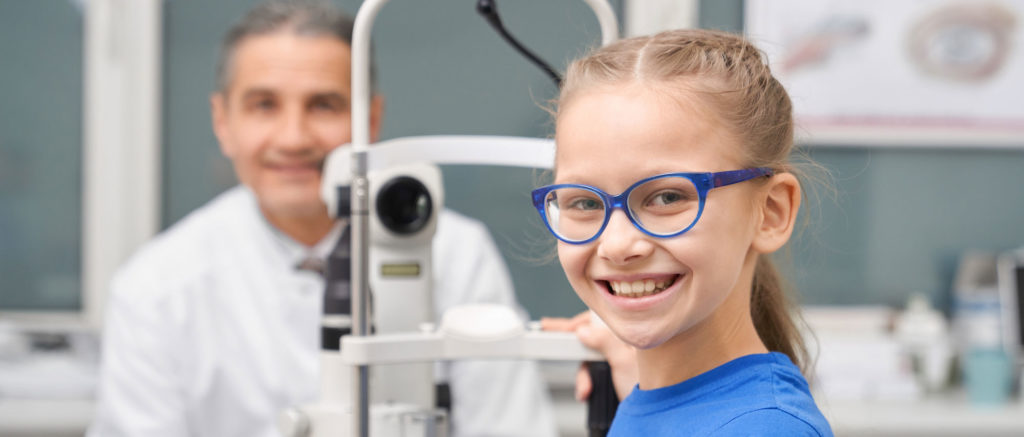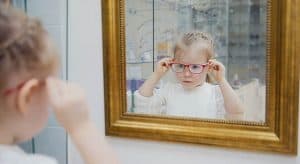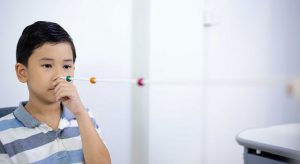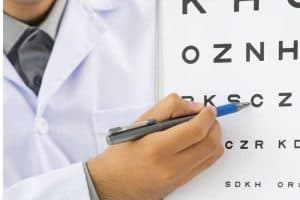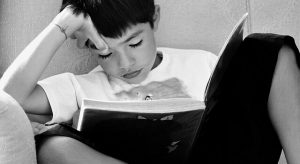Can’t understand why your child is struggling in school?
Up to 25 in every 100 children are affected by vision problems — that’s at least six students in every class.
Regular and comprehensive eye exams are crucial for detecting vision problems — and essential in aiding a student’s academic success.
Here are the top 5 frequently asked questions about vision problems and how they impact a child’s academic performance.
Q1: What are the signs of a vision problem?
If your child shows any of these signs, they may have a vision problem impacting their school performance:
- Reading below grade level
- Reduced attention or concentration spans
- Reads words backwards, such as: was=saw and top=pot
- Closing or squinting of one eye
- Excessive blinking or squinting
- Frequently bumps into objects or drops things
- Frequently loses items
- Head is frequently tilted to one side or one shoulder is noticeably higher
- One eye turns or drifts in a different direction than the other
- Poor motor/visual coordination skills (hand-eye coordination)
- Problems judging distances and bumping into objects
- Tilts or turns head while reading or during other visual activities
Q2: What are the symptoms of a vision problem?
Most children do not complain as they are not aware of any differences to other students, but if you child does mention any of these symptoms below, an eye exam is highly recommended:
- Blurry vision
- Concentration and attention difficulties
- Dizziness or nausea
- Double vision
- Words move on a page or run together
- Eye strain or headaches
- Motion sickness or car sickness
Q3: Does your child display any of these behaviors while reading?
Here are some signs that you or a teacher might notice, that could indicate a vision problem:
- Avoids or dislikes reading
- Covers or closes one eye
- Fatigues easily
- Frequently loses place and/or skips words
- Holds object or reading material too close
- Repeats lines when reading
- Rubs eyes during or after periods of reading
- Tilts head toward object or book
- Uses finger or ruler to read
If your child shows any of these signs or symptoms, schedule an evaluation with an experienced vision therapy eye doctor.
SEE RELATED: Can Vision Therapy Help Learning Difficulties? Top 8 FAQs
Q4: Can glasses correct the vision problem?
Glasses are not always the only solution for children with vision problems.
A visual problem can also occur when there is a problem with the visual skills.
Many children have 20/20 sight, but still have visual problems—that cannot be corrected with glasses alone.
Lazy eye, convergence insufficiency, focusing difficulties and slow eye tracking are just a few of the reduced visual skills that can impact a child’s school grades.
These types of vision problems can’t always be corrected with glasses.
Fortunately, vision therapy is an effective, long lasting treatment for reduced visual skills.
Q5: How does vision therapy help?
Treating visual problems often has a direct and positive impact in reducing problematic behavioral and learning problems.
Vision therapy is a customized treatment program that involves specific eye exercises that help to retrain the eyes and brain to communicate better.
Researchers have found that vision therapy can be helpful for children who have been diagnosed with ADHD or other learning disabilities.
LEARN MORE: Vision For School
Schedule an evaluation with a vision therapy eye doctor who can diagnose and treat your child’s vision problems.
Over 1 in 4 children have a vision problem, and many will benefit from vision therapy.
If a child’s eyes aren’t focusing and working together properly, then attention, focus, grades, reading abilities, and behavior will all be affected.

